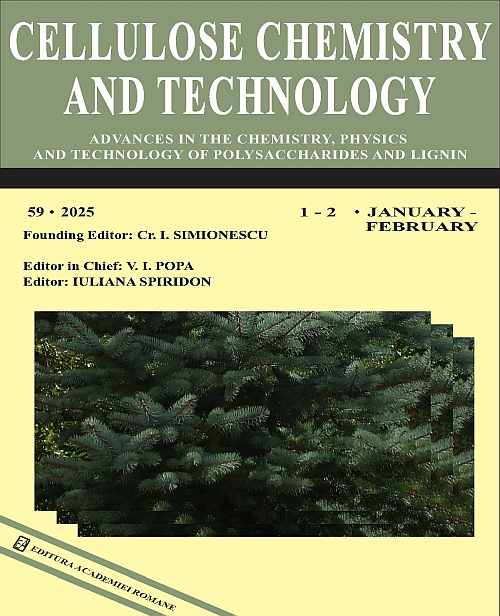
ISSN 2457-9459 (Online)
ISSN-L 0576-9787 (Print)

2023
|
Journal Citation Reports |
Impact factor 2023: 1.3
5-Year Impact Factor: 1.2
Article Influence® Score: 0.140
Ranked 9 out of 23
MATERIALS SCIENCE, PAPER & WOOD (Q2) |
|
|
Scopus |
CiteScore 2023: 2.3
SNIP: 0.405 |
|
|
SCImago |
SJR: 0.264
H-Index: 42
Ranked Q3 |
|
|
|
|
Title
Effects of refining temperature and pressure on chemical and physical structure of low-energy thermomechanical pulp (Asplund fibers) determined by rapid FTIR analysis
Authors
JUHA FISKARI, OLGA DERKACHEVA and ALIREZA EIVAZI
Received
July 14, 2024
Published
Volume 59 Issue 5-6 May-June
Keywords
Norway spruce, high-yield pulp, biomass fractionation, mass transfer
Abstract
Asplund fibers are manufactured using low-energy thermomechanical pulping. They have traditionally been used in
fiberboard applications. Since Asplund fibers have a high specific surface area (SSA), they can find new uses as
biorefinery feedstock. However, little is known about how the Asplund process parameters affect the chemical and
physical structure of the fibers. This research examined the effect of refining temperature and pressure on softwood fiber
properties at refining temperatures ranging from 170 °C to 200 °C. Spruce chips were subjected to a pilot-scale Asplund
refining process. FTIR analyses revealed ordering of cellulose macromolecules at elevated temperatures up to 190 °C.
Ordering of cellulose was confirmed by XRD analyses. FTIR analyses also suggested lignin condensation at elevated
temperatures. SEM images showed improved fiber separation at higher temperatures when compared to the temperatures
of 170 °C and 180 °C. These findings are useful when developing novel biorefinery concepts, where Asplund fibers are
used as feedstock.
Link
https://doi.org/10.35812/CelluloseChemTechnol.2025.59.50
|
|
|



